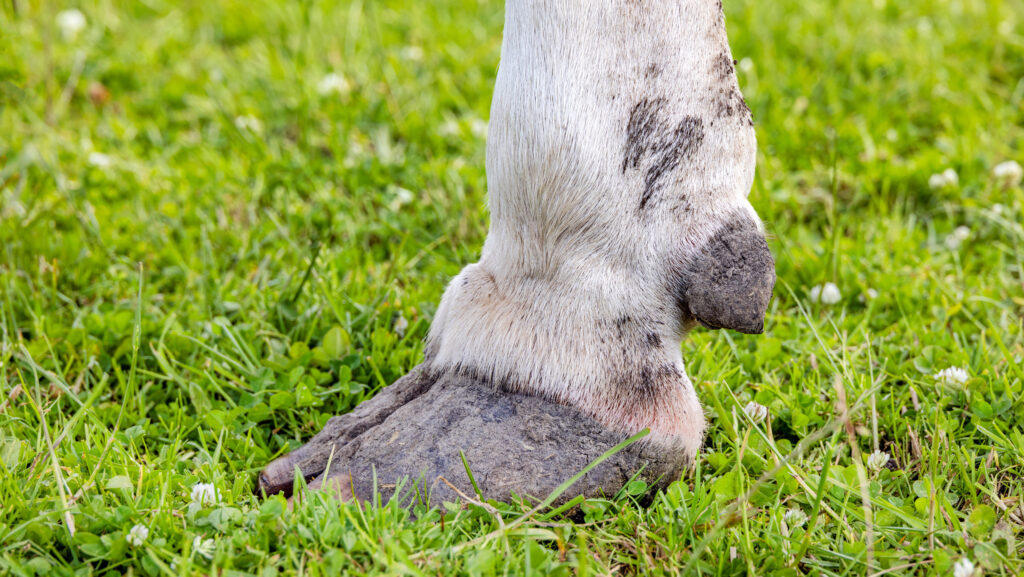Benefits of a mentored team approach to lameness control
 © Adobe Stock
© Adobe Stock Lameness is estimated to cost the dairy industry £250m/year through impaired fertility, reduced production, premature culls, and treatment costs.
The average cost a day of lameness for all lame cows (with a mobility score 2 and 3) is estimated at £3.30/day, according to AHDB data from 2023.
See also: Dairy mobility survey lays out lameness recommendations
As well as the financial cost, lameness has a significant negative impact on public perception of the dairy industry.
It is difficult and uncomfortable to watch lame cows at the back of the line hobble past you while you sit in your car, waiting for them to cross the road.
Even if this is just one cow out of 300, it is the one that will likely be remembered by the commuter waiting to pass, or the children and their parents on the school run each morning.
I suspect this is more damaging to our industry’s image than a lot of producers realise.
The welfare costs on an individual cow basis should not be ignored either. Cows are stoic animals.
By the time they are obviously lame, they are in a significant amount of pain, which needs addressing without delay.
Thankfully, this is occurring much less frequently in recent years, and lameness is generally better understood.
However, I do occasionally still hear comments such as “she’s not in any pain” in relation to a lame animal.
There are extremely few cases where lameness does not stem from pain, and if the cow was sound previously and then becomes acutely lame, it is an absolute guarantee of significant pain, and requires effective treatment without delay.
Equally important is the cost to the morale of the people dealing with lame cattle.
Nobody wants to see the animals that they put so much time and effort into caring for in pain; it is stressful, upsetting, and mentally draining.
In an industry with such alarming suicide rates and mental health concerns, morale should be a priority.
How to make progress
The modern dairy farmer must have excellent attention to detail and the ability to view and manage the production operation as a whole. Time is precious and in short supply, and lame cows can take up a lot of time.
Getting to the root cause of lameness on each farm and minimising the risk factors is the key to making lasting progress.
The alternative is a continuous firefighting approach, treating lame cows and culling those that do not get better or are not treated promptly enough to facilitate a full recovery.
Having regular scheduled visits from a professionally qualified foot-trimmer is something that a lot of dairy farmers now recognise as essential.
However, if this is the only measure taken to control lameness, which it often is, it will not tackle the source of the problem, and the costs of lameness are likely to remain high as a result.
The risk factors and causes of lameness can be quite specific to each farm, which is why a blanket approach to lameness control does not always yield the best results.
For example, infectious lesions, such as digital dermatitis and foul in the foot, obviously have very different origins and risk factors to non-infectious lesions such as sole haemorrhage or white line lesions.
A complete understanding of the whole picture is required for the most effective combat.
No stone unturned
AHDB’s Healthy Feet Programme (HFP) is designed to do just that.
The aim, with the help and facilitation provided by a trained mobility mentor (usually a vet with a particular interest in lameness), is to leave no stone unturned when assessing the whole system, from a cow’s foot perspective.
Carrying out a methodical and detailed risk assessment frequently highlights areas of risk that have previously gone unnoticed or have not been associated with causing lameness, but are actually contributing significantly to the problem.
The HFP recognises how important it is to get all the farm’s staff, plus the foot-trimmer, on board. It is likely that everyone influences lameness in some small way, regardless of whether or not they deal directly with lame cows.
Risk factors
The way cattle are moved can be one factor that contributes to white line disease.
If the cattle are rushed, or if the grip on the floor is poor, these shearing forces on the feet can cause the sole to separate from the white line, which allows foreign material/bacteria to penetrate and infect the white line region.
Another example is standing times as a risk factor for sole haemorrhage.
If cows are kept standing in the collecting yard for longer than necessary, this can contribute significantly to the incidence of sole bruising (and sole ulcers if the bruising is not identified and dealt with promptly and effectively).
If everyone involved in milking is aware of this risk, and are all working towards a common goal of reducing lameness, then cows are far less likely to be left standing for long periods.
Research-backed knowledge is available through the HFP to effectively reduce lameness in dairy cattle, regardless of the system, with the correct help and guidance, and when the whole team is on board.
Often, it is not having the newest piece of technology that yields the best results with a complicated multifactorial problem such as lameness, but it is stripping things back to basics and developing a deeper understanding of what is going on beneath the surface of the daily routine.
The answers are often more straightforward than are realised.
More information on the HFP, or to find a mobility mentor, visit ahdb.org.uk/healthy-feet-programme
